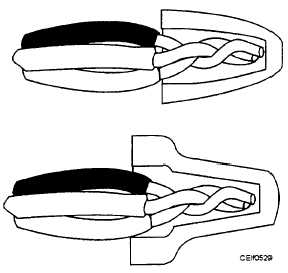Figure 5-28 shows how to make a pigtail splice. Note the two ways to end the splice. When the splice is taped. the ends must be bent back so the sharp edges will not penetrate the tape (fig. 5-28). When a solderless connector is used instead of tape. the ends are cut off (fig. 5-28). When more than two wires are joined in a pigtail splice, as shown in figure 5-29, they should be twisted together securely before the solderless connector is put

Figure 5-28.—Simple pigtail splice.

Figure 5-29.—Multiple-wire pigtail splice.
on. Twisting the wires together first ensures that all the wires are fastened together properly.
Western Union Splice
The Western Union splice (fig. 5-30) is used when the connection must be strong enough to support long lengths of heavy, wire. In the past. this splice was used to repair telegraph wires. If the splice is to be taped, care should be taken to eliminate any sharp edges from the wire ends.
T-tap
The T-tap (fig. 5-31) is a type of splice that allows a connection to be made without cutting the main line. This connection is one of the most difficult to make. A certain amount of practice may be necessary to make this connection look neat. Study figure 5-3 1 to determine the proper technique in making this splice.
Portable Cord Splices
Cord splices are weak because there is no connector to hold them together; therefore. they should be used for emergency purposes only. If the cord must be saved, use twist lock plugs and receptacles to rejoin the cord. Figure 5-32 shows how solid wires are spliced. The individual splices are staggered to prevent a large bump when the cord is taped. Additional strength may be added to this splice by soldering each individual splice.

Figure 5-30.—Western Union splice used where substantial strain may be placed on the connection.
Continue Reading